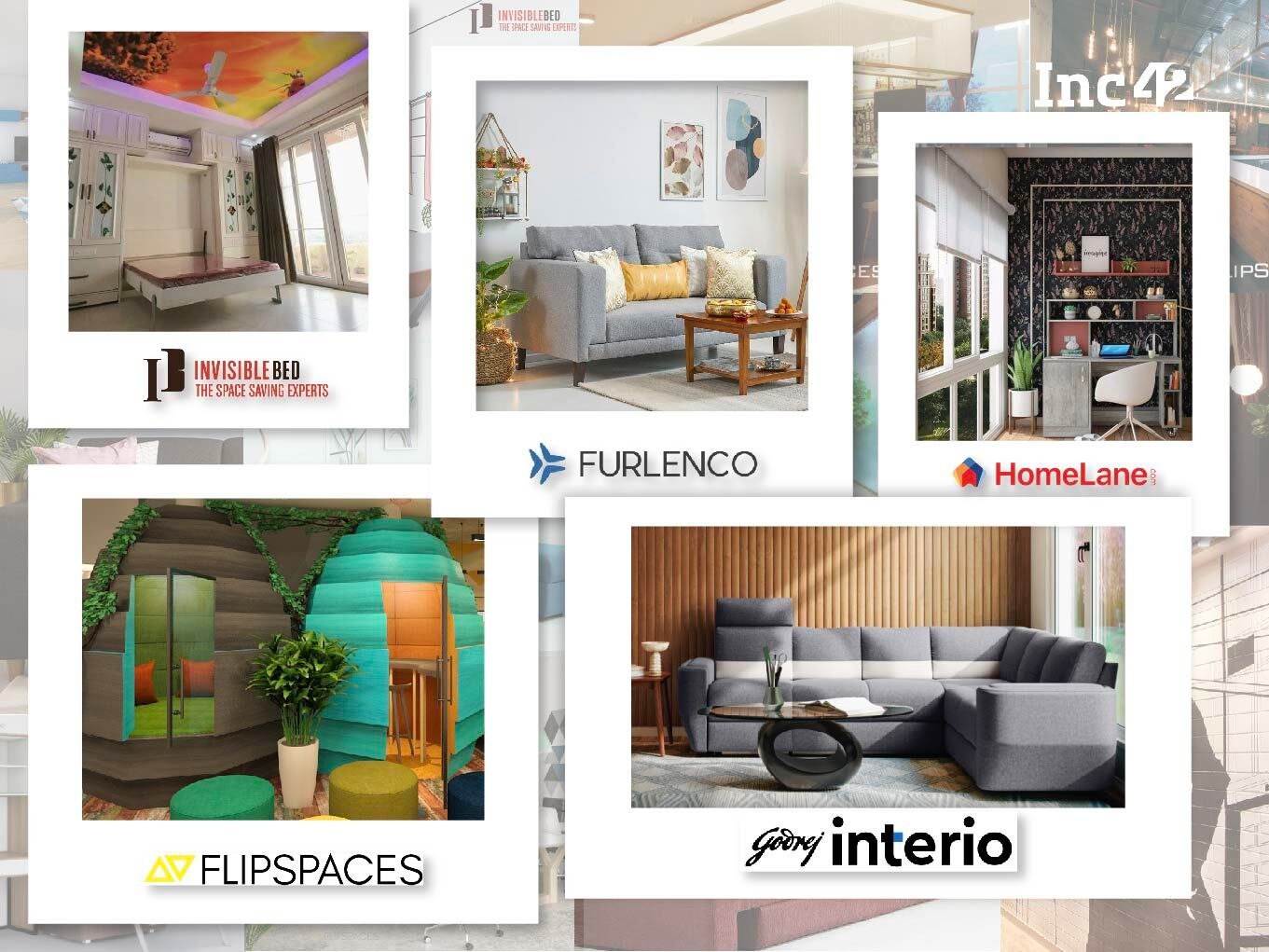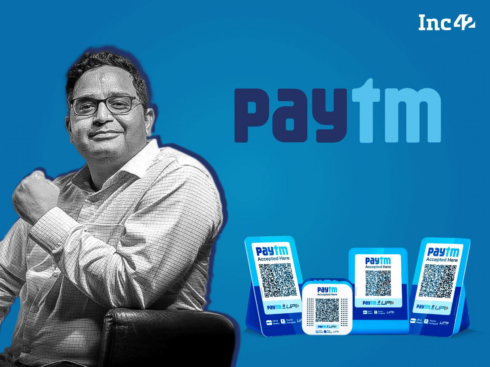SUMMARY
Although a niche category in the D2C space, the online household furniture segment has seen a CAGR of 85% between 2017 and 2020
As new brands enter the space, key growth drivers will include differentiation and future-proofing business models
Existing players like Furlenco, HomeLane, InvisibleBed and others focus on technology, design innovation and ubiquitous CRM to make the online segment as attractive as the offline market
Before the Covid-19 crisis, furniture, like fashion, was considered an evergreen sector due to steady economic growth and subsequent consumer sentiment. The logic: A surge in commerce and industry would continue to boost office and institutional furniture segments, respectively, while a robust consumer index would push the household furniture market that already accounted for 65% of the total market size.
Then the pandemic hit almost every industry and all aspects of our lives, but all was not doom and gloom. For instance, the rapid growth of the direct-to-consumer (D2C) brands amid a black swan event has been lauded as an outcome of disruptive business models, great product innovations and breakthroughs in the D2C enabler space.
Add to that cutting-edge marketing analytics, interactive customer engagement and evolving logistics solutions, and it is not surprising that the digital-first D2C segment is expected to reach a $100 Bn+ market size by the end of 2025.
The household furniture segment, especially the niche online market, has also witnessed a significant uptick due to the D2C drive. To begin with, the organised sector accounts for just about 15% of the industry, leaving the field wide open for new-age innovators, and D2C brands made good use of this opportunity.
The exponential rise in home offices and online schooling further pushed the demand for comfortable, ergonomic and stylish furniture pieces that would not be out of sync with the overall home décor.
Finally, urban millennials and Gen Z did their bit in accelerating the growth as they went for minimalist and chic mechanical/multi-utility furniture, the forte of tech-driven startup players.
The Dynamics Of Change
Furniture shopping online was not a distinct trend before the pandemic. But the massive shift in consumer mindset (the majority embraced safe and hassle-free online buying compared to offline shopping), along with product variety and the supply chain robustness driven by the D2C brands, led to the growth of the online household furniture segment.
“It is not convenience alone,” said an analyst who follows the consumer durables space. “Buying the latest and stylish pieces online is a lifestyle choice for the urban and the upwardly moving crowd. Also, many people want to buy ‘green’ and look for upcycled or refurbished pieces. You also get a lot of choices online if you are buying engineered wood.”
Consequently, quite a few players witnessed significant growth even during the pandemic. For instance, Bengaluru-based interior designing startup HomeLane turned cash positive in November 2020, while LivSpace, its same-city rival, announced it would put in $50 Mn for retail expansion across India and the APAC in September 2021.
The industry numbers validate these megatrends. Although the online furniture market was valued at $700 Mn in CY2020, a mere 3.5% of the overall $20 Bn market size, it grew at a CAGR of 80-85% between CY2017 and CY2020, said a RedSeer report.
Another report by Research and Markets projects India’s overall furniture market to reach $37.72 Bn by the end of 2026. Based on the projection and given the current market share of 3.5%, the online household furniture market is likely to hit at least $1.32 Bn by that time.
What Needs Fixing In The Online Home Furniture Space
Although growth numbers are encouraging, a little scrutiny reveals that online furniture has made the cut mainly in Tier 1 cities. More than two-thirds of the online furniture market, with an approximate value of $525 Mn, is spread across major Indian cities.
A key reason for this divide could be affordability. As the economic fallout from the pandemic continues to hit jobs and salaries, especially the lower-income groups, lower per-capita spending is here to stay. So, pricing is a major issue that online furniture brands need to fix to ensure long-term growth.
From furniture rental to no-cost EMI and buy-now-pay-later (BNPL) schemes, the solutions are plenty, and customers need not make a huge down payment to own a piece. But are consumers comfortable with recurring payments when they are not purchasing the more familiar white goods? Online furniture companies need to keep that in mind before tapping into the customer base beyond the metros, think experts.
The trust/quality factor is equally important. Much like fast fashion, fast furniture has emerged as a popular category where cost-effective materials (particleboard instead of hardwood or steel) are used to keep prices under control.
“If you have to toss new furniture bought online, if it doesn’t last long, you will return to your local carpenter or a trusted store sooner or later,” said a Panchkula-based industry veteran who did not want to be named.
“Getting it done locally is always more transparent (material-wise). And the karigar (maker) is more thoughtful and takes good care of your customisation needs. You only get a set piece when you buy online or pay a lot more to customise it,” he added.
Whether brands can turn disruptive strategies into sustainable solutions to keep up the current momentum will further define if the segment can create a compelling presence in the ecommerce space.
Take, for instance, how furniture giants like IKEA, Wayfair, Joss & Main and Yestersen are using visual AI and big data to boost product discoverability and customer experience. Instead of searching by text, a visual search enables users to search by images. If one has a specific product/design in mind, they only need to upload an image of the same and find the closest match/similar alternatives within seconds.
Given its convenience over manual browsing, a Gartner report says that early brands that redesign their websites to support visual search are likely to witness a 30% rise in revenue. In fact, a case study on Yestersen claims that driven by disruptive technology, the home goods marketplace saw a 186% rise in conversion rate that contributed 47.5% of its online revenue.
All this calls for timely innovation, scaling and future-proofing as the growth of this big subset of the online home décor market will prove whether D2C brands are good enough for big-ticket purchases.
Leadership from Godrej Interio, one of the oldest legacy brands and a new entrant to the D2C space, believes it is possible.
“From the past observations and ongoing trends, we believe that prioritising digital merchandising and online presence will eventually help companies navigate through the ever-changing consumer landscape. A truly omnichannel experience will emerge that will encompass virtual product tours, 360-degree views of showrooms and online consultancies. All this will increasingly become a basic expectation, and companies that embrace new technologies for enhanced customer experience will emerge as clear winners,” said Subodh Mehta, senior vice-president, sales and marketing, at Godrej Interio.
Decoding Sustainability Strategies
The past decade saw the online home furniture segment delve into a click-and-mortar experiment, where brands used the digital medium to catch people’s attention and bring them to offline experience centres.
Today, furniture brands are looking at digital platforms as a viable solution to create an immersive experience and sell to consumers online without requiring those traditional shops/design studios/offline experience centres.
In this new era of digital-first businesses, it is essential to take a look at how brands in the household furniture space are spearheading their offline-to-online strategies to enter a higher growth trajectory. Inc42 talked to four online furniture brands to understand their digital tweaks and future-proofing solutions:
Furlenco: Bringing Long-Term Value To Furniture Rental Via Subscription
Set up in 2012 by Ajith Karimpana, Bengaluru-based Furlenco started promoting the brand with hoardings and radio ads but soon moved to digital marketing and collaborated with popular YouTube channels FilterCopy and The Viral Fever. The brand presented itself as a convenience product for consumers who moved to a new city and did not want to buy new pieces or move furniture from one place to another.
As the supply chain broke down during the lockdowns imposed to contain the pandemic, the D2C brand found it difficult to acquire new customers. But its rental model kept up the income flow ticking.
Nevertheless, the threat to business continuity during the Covid crisis made the company rethink its strategy. Until then, the CLTV (customer lifetime value) was low as rental plans varied between six and 15 months. Optimising the revenue was essential to ensure greater sustainability, but increasing the rent was not viable as Furlenco had to stay competitive.
“Earlier, public opinion was that people would want to own their furniture at some point. But the financial advantage we were providing surpassed that proposition. But to grow the customer lifetime, our value proposition had to shift from products to the service itself,” said Karimpana.
This time, his inspiration came from the subscription model adopted by Netflix, and he decided to create long-term value to retain consumer interest.
Realising that it would be a capital-intensive initiative, Furlenco first wanted to make sure that it would have all the required inventory, infrastructure and funds ready for this leap. So, immediately after raising a series D round of $140 Mn in July 2021, the company launched UNLMTD, an annual subscription plan ranging between INR 2,999 and INR 4,999. With this plan in place, customers can get between 6-15 pieces of furniture at one price in the package besides value-added services such as free cleaning, swapping and relocation.
Furlenco says it has sold 2,000 subscriptions within two months of the launch and thinks the new business model will push its CLTV multifold. The company clocked INR 100 Cr in revenue in FY21 compared to INR 90 Cr in FY20, recording YoY growth of 10%. In an interview, Karimpana said that the company would aim to reach INR 650 Cr by FY26.
Incidentally, Furlenco witnessed 42.6% YoY growth in FY20, but the growth rate dipped in FY21 as the business was hit by the pandemic.
InvisibleBed: Scaling Futuristic Décor With Space-Saving Furniture
With the apartment culture rising in Tier 1 cities due to severe space crunch, multiutility and space-saving pieces have witnessed a consistent demand in the household furniture space.
According to Allied Market Research, Delhi is among the top four cities (after Tokyo, Beijing and New York) to have seen the fastest adoption for folding furniture due to smaller homes and rising urbanisation.
Founded by Prashanth Havinahal, Bengaluru-based InvisibleBed sensed an opportunity in this transformative design category and launched its D2C platform in 2013. Currently, the company offers full-size beds that fold into sofa sets, wall-mounted desks, sit/stand tables and other foldable furniture pieces.
The brand is one of the earliest players to experiment with multipurpose furniture and space-saving designs, and it has to overcome many challenges. To start with, it was difficult to find a vendor who could mass-produce furniture pieces based on its prototypes. Besides, the company had to convince them to manufacture in low volume before it found the product-market fit.
Most importantly, it had to build consumer trust in terms of product quality and durability while introducing a new vertical. So, the brand decided to focus on product details, the materials used and their benefits during its marketing campaigns to spread awareness among potential customers.
As India screeched to a halt during the pandemic, so did InvisibleBed and its offline revenues. The only channel that worked was furniture ecommerce, and the company focussed on growing its marketplace presence by partnering with the likes of Amazon, Flipkart, HomeLane, LivSpace and Pepperfry.
The accelerated digital transformation and the surge in ecommerce worked well for the company. With work from home becoming the order of the day, its small-ticket products like wall-mounted desks and sit/stand tables saw a 4x spike compared to pre-pandemic times. And the increase in online sales kept the company afloat.
InvisibleBed did not let go of this momentum even after the lockdowns came to an end. The D2C brand pushed sales via its website and partnered with Shiprocket and Delhivery for a hassle-free, pan-India supply. But last-mile deliveries in certain areas were still tricky due to their containment zone tags.
“Managing logistics for the furniture industry is always challenging. The goods are heavy, tough to pack and transport, and logistics partners need to ensure damage-free delivery. With the pandemic came lockdown restrictions and workforce shortage that increased those challenges manifold,” said Gautam Kapoor, cofounder and COO of Delhi-based Shiprocket, a third-party logistics (3PL) provider and a key enabler of the D2C ecosystem.
Shiprocket has been attempting to streamline the logistics challenges with furniture goods in its own way. One such feature it launched is multi packet shipment or MPS. Usually, furniture goods are packed and transported separately. In those cases, businesses can opt for MPS service, which will allow them to generate one master Air Waybill (AWB) number and child AWB numbers to ensure that not only all the packages are individually insured, but also reaches the end consumer at the same time.
In spite of all the help it could get, the furniture brand faced numerous issues regarding order fulfilment due to lockdown mandates. In many cases, it was forced to hire local labour and deliver goods on foot where trucks were not allowed inside containment zones. And on several occasions, it had to leave the furniture at the gate of a housing society.
However, its efforts to manage logistics and ensure on-time delivery even in adverse situations boosted consumer trust and led to significant growth. The company clocked INR 8 Cr in FY21, a 150% increase in revenue growth compared to INR 5.33 Cr in the previous year.
HomeLane: Jack Of All Trades, Master Of One
Started in 2014 by Srikanth Iyer (CEO) and Tanuj Choudhry (COO), HomeLane is a Bengaluru-based interior designing firm that covers the entire range of services, from conceptualisation to installation.
In its early days, HomeLane made the mistake of committing too much within short time frames and failing to stick to deadlines. The situation got so bad that its net promoter score (the likelihood of a customer recommending the brand) dipped to -50. After some intense analysis, the startup decided to have a single focus — on-time delivery at a predictable cost.
To achieve that, the company adopted a counterintuitive approach and reduced product options. For instance, most major home décor players display 1,000+ colour options for furniture, but HomeLane has just 163.
The next challenge was to ensure that customers would find what they liked within its limited offerings, and the company decided to leverage data analytics. Tracking customer data based on website behaviour (the designs on which they spend more time) and house address (for floor plan and demographic research), and using AI-powered sentiment analysis during live interactions through virtual meetings, HomeLane was able to build a robust customer profile in each case before designs were finalised and sent out for approval.
This tech-aligned way of functioning also came to the company’s rescue when in-person home visits for interior designing and installations were a strict no-no during the lockdowns. It is now using a 3D design platform called SpaceCraft to enable a 360-degree interactive view where a customer can move things around and add/remove objects to decide on the final design. The technology has helped reduce physical visits until the final installation, and people are able to get their homes furnished without stepping out.
Reliable and robust tech rendering also boosted HomeLane’s business. It became EBITDA positive in November 2020, the company claims.
Innovation Is The Key
Most of the brands we talked about say that tech-driven innovation and digitalisation lie at the core of building scalable and future-proof models. Take, for instance, Mumbai-based Flipspaces, an interior design startup for commercial spaces that leverages tech at every step for fast and efficient implementation. Of course, the company is not part of the household furniture ecosystem, but its SaaS-powered digitalisation initiative has helped D2C brands get a firm footing online.
Aware of the difficulties faced by brick-and-mortar furniture businesses during lockdowns, Flipspaces launched VIZSTORE in January this year to enable digital storefronts. The SaaS platform allows businesses to create digital replicas of their physical stores and thus ensure a close-to-real-life experience for online shoppers. The company claims that its SaaS solution will help small physical stores get into the omnichannel format and scale faster without tapping into third-party marketplaces.
The company is looking to take VIZSTORE to 20K paid customers, retailers and brands, by the next financial year. Flipspaces wants to add more features in the coming months to help implement a seamless buying experience. It is also expecting to cross $1 Mn ARR from the SaaS product alone.
So far, the numbers and growth prospects look good for the online household furniture segment. The market is still largely untapped, and the investor community remains bullish, with $86.2 Mn flowing into the space in CY2020. But cautionary tales are aplenty.
Bengaluru-based online furniture brand Urban Ladder was one such spectacular failure. After a stellar start in the digital ecosystem, the brand held on to its online-only strategy for too long and failed to make a timely move towards the omnichannel format to ensure greater reach. By 2020, it had only 10 offline stores while its biggest competitor Pepperfry crossed 40 besides cementing its online presence.
The Bengaluru firm slowly lost investor confidence, and in November 2020, it was sold to Reliance Retail Venture (RRVL), a subsidiary of Reliance Industry, for just about $24.5 Mn, a 75% cut in its paper valuation.
Of course, there were plenty of other reasons behind Urban Ladder’s failure apart from a lack of strategic agility. But just like the online grocery segment, mastering the online furniture space may prove to be tricky. The winners will be those who can timely sync with consumer needs, improve the online-offline hybrid experience and develop a sustainable scaling strategy.



























